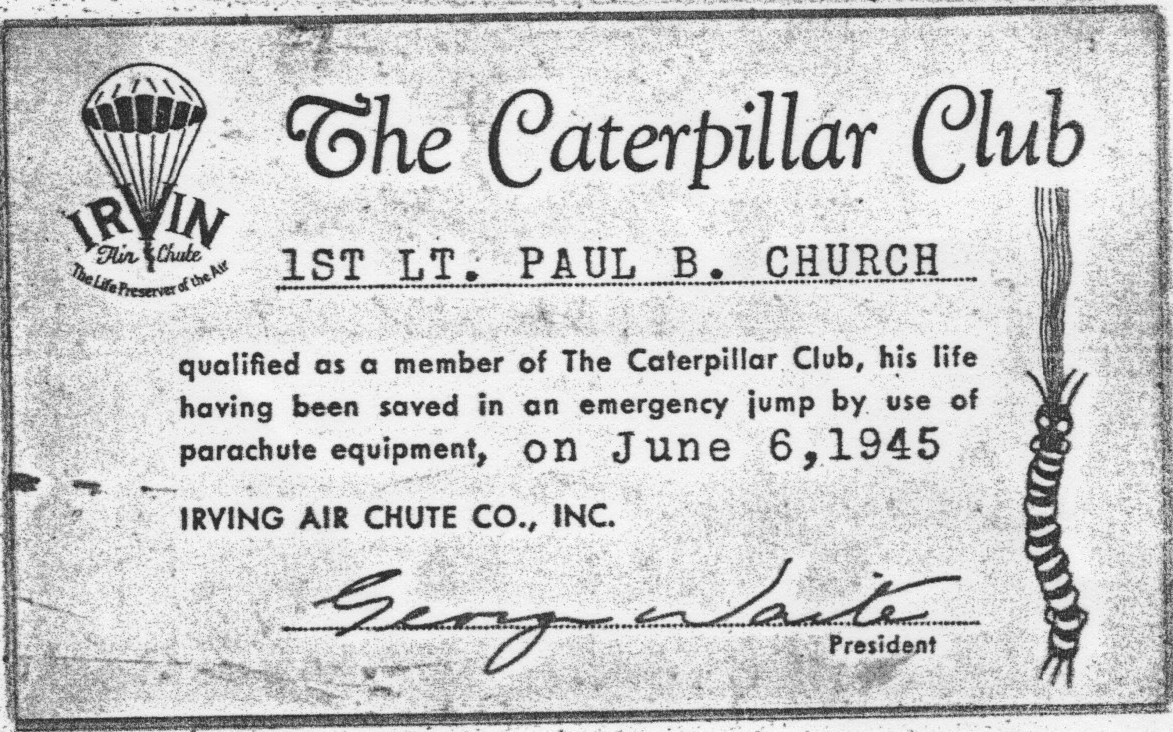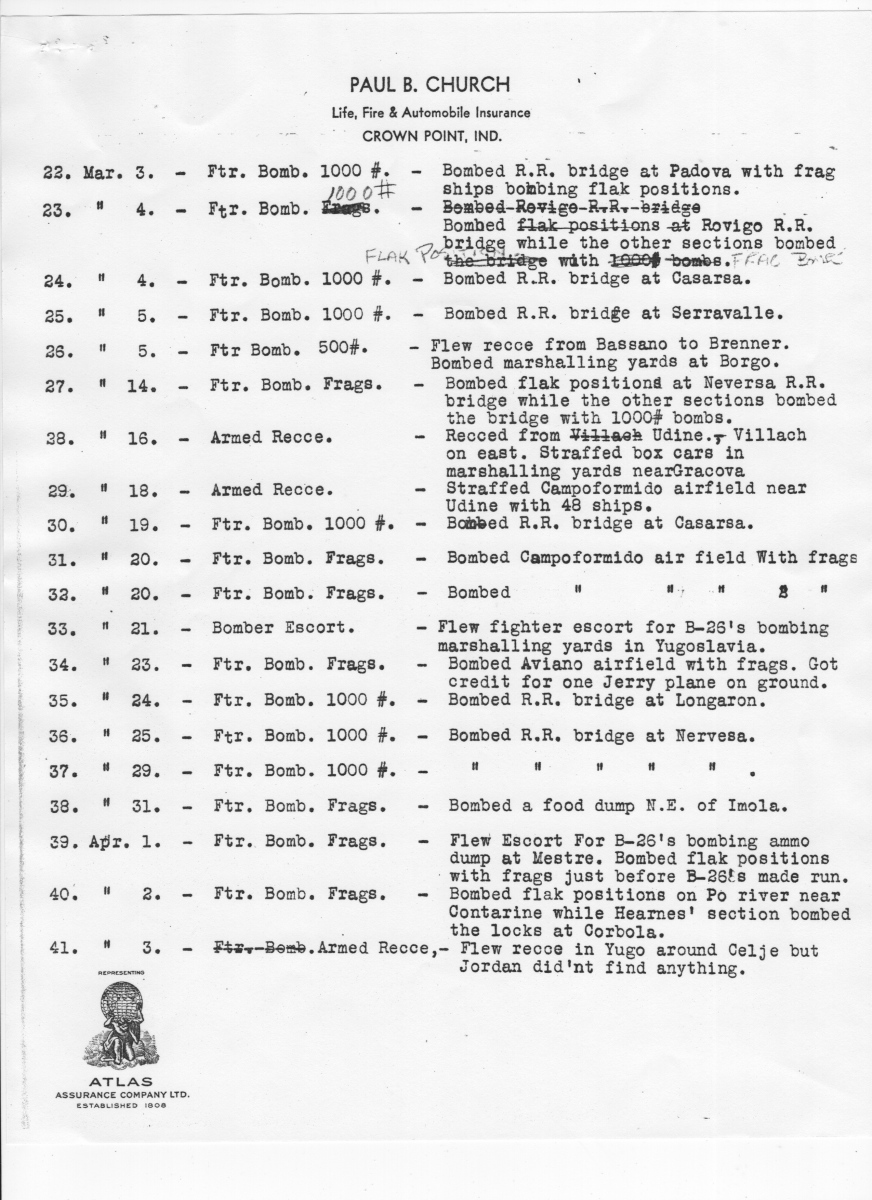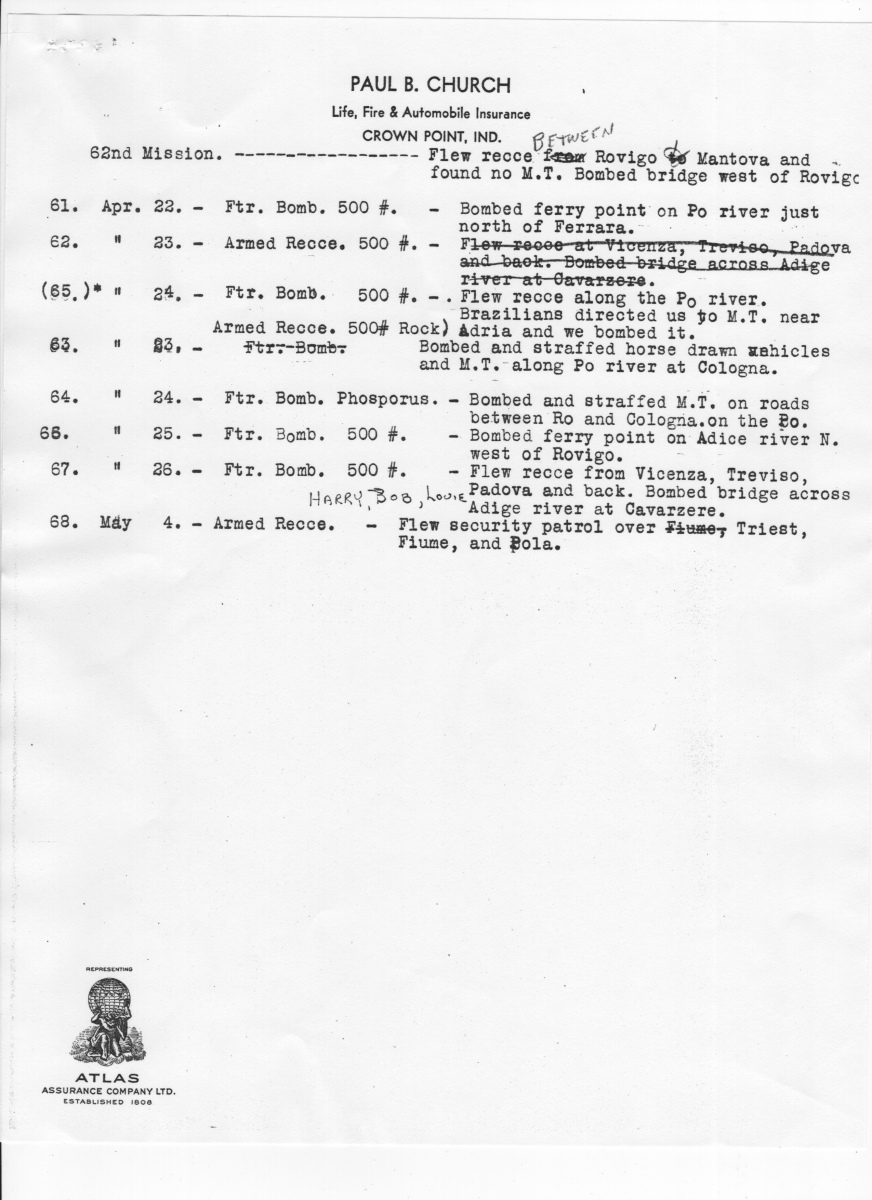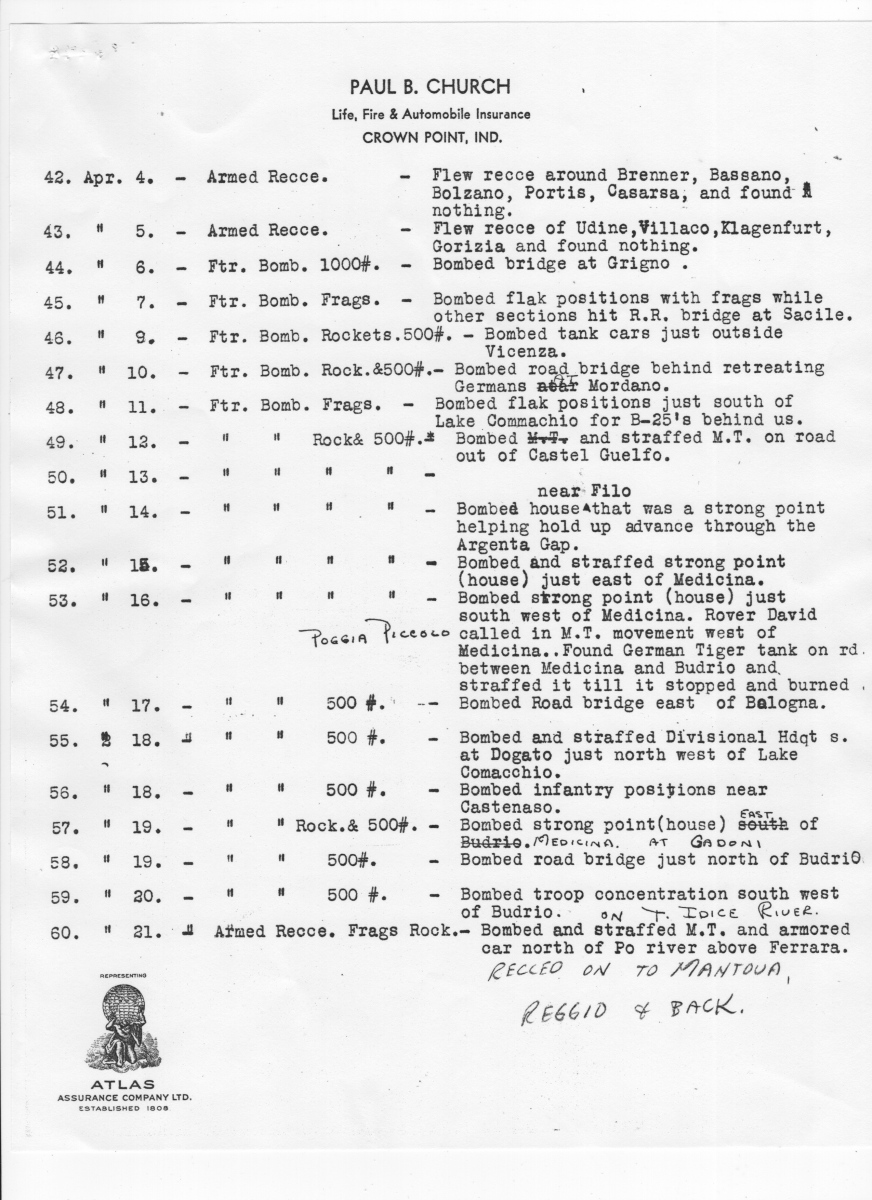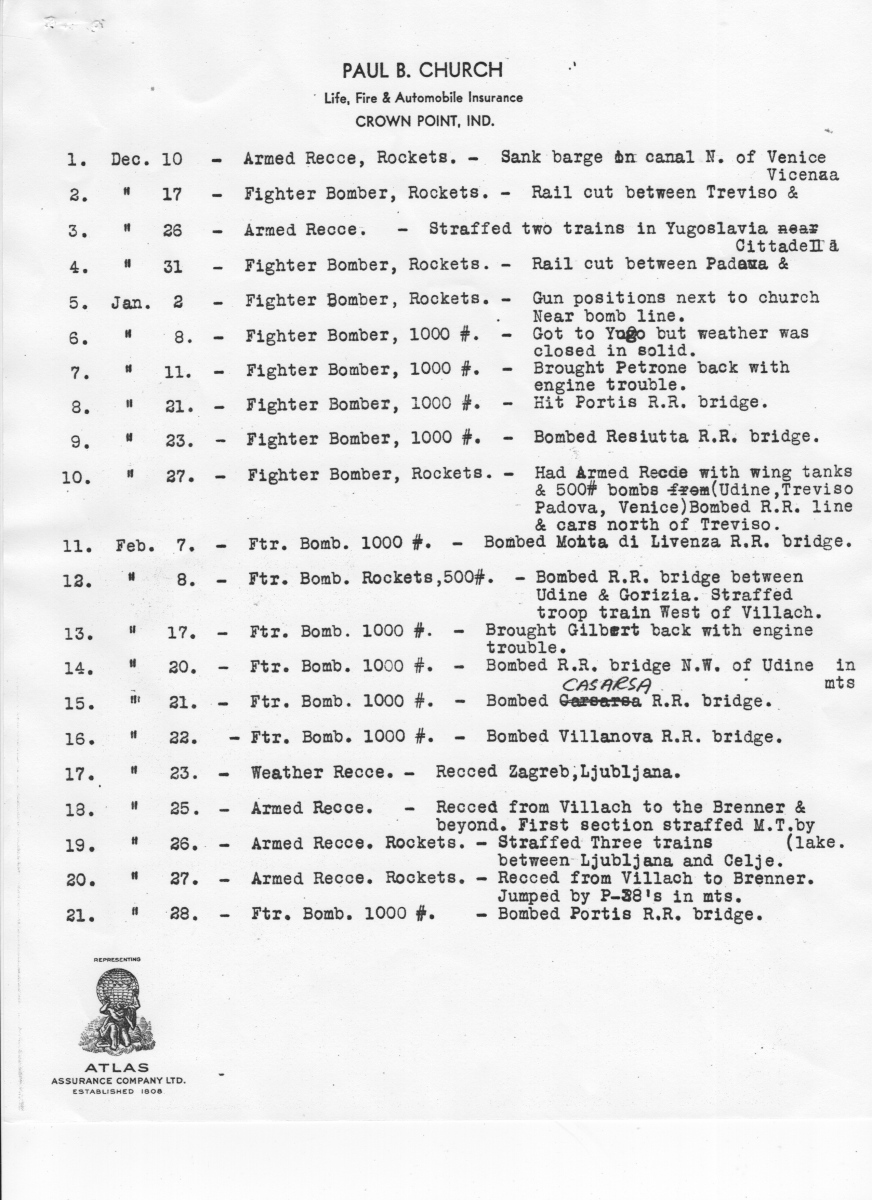Paul B. Church Jr.
The biography and missions flown by pilot Paul B. Church Jr., provided by his family
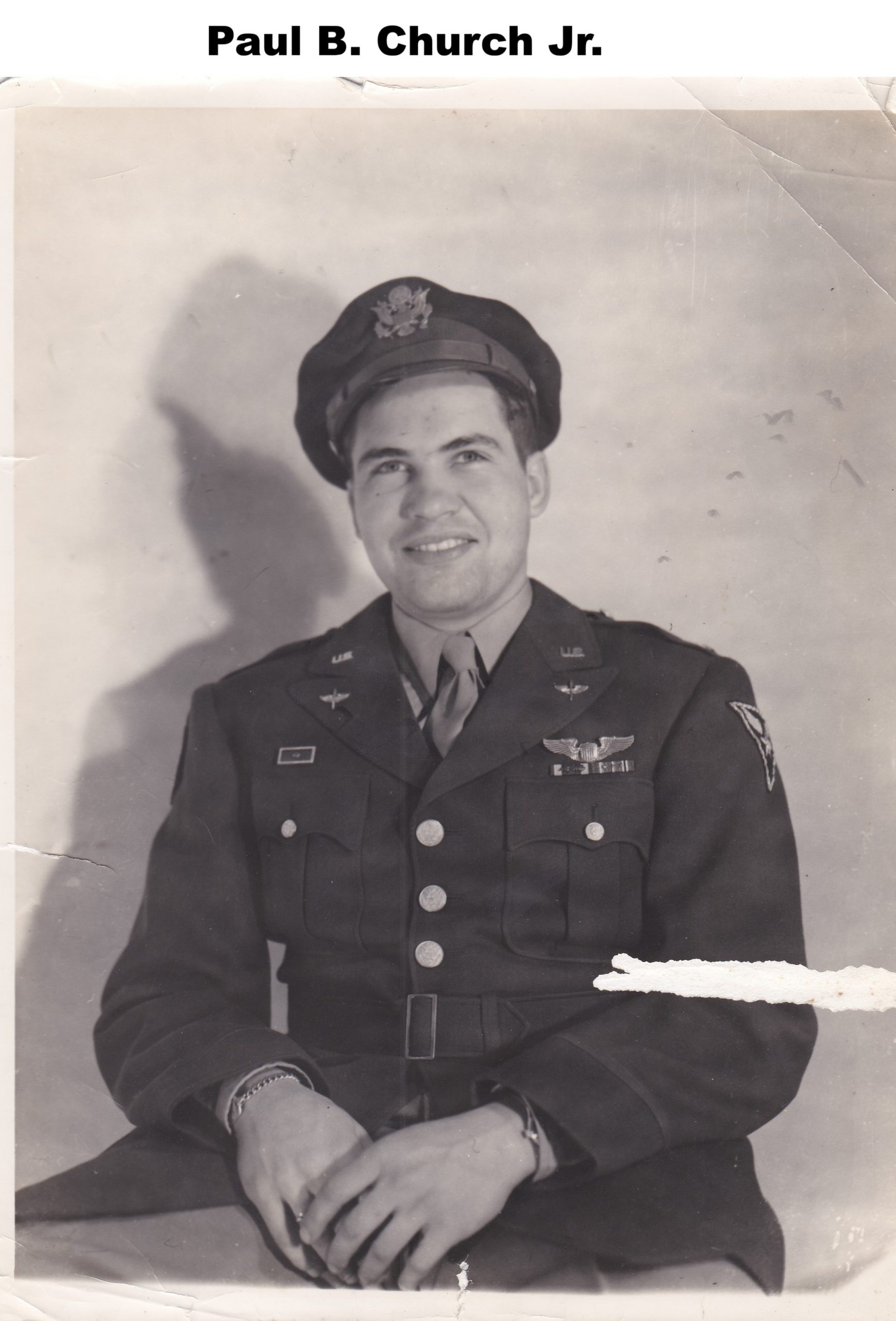
PAUL B. CHURCH, JR. LT. COLONEL USAFRES (RETIRED)
1942-1984
- Born April 21, 1924, Indianapolis, Indiana
- Called to active duty, February 27, 1943
- Basic training, Keesler Field, Biloxi, Mississippi
- Graduated from Crown Point High School, 1942, Crown Point, Indiana
- Entered Purdue University Engineering Program, 1942, West Lafayette, Indiana
- Enlisted Army Air Corps, December 10, 1942
- Attended Memphis State Teachers’ College as an aviation student, Memphis, Tennessee
- 25-day trip in Liberty
- Ship convoy from Newport News, Virginia, to Naples, Italy (approx. October 18-November 12, 1944].
- San Antonio, Texas, preflight and classification training center
- Primary flight training, PT-19s, Garner Field, Uvalde, Texas
- Basic flight training, BT-13s, Waco Army Air Field, Waco, Texas
- Advanced flight training, AT-6s, Moore Field, Mission, Texas
- P-40 and gunnery training, Moore Field, Mission, Texas
- P-47 training, Pocatello, Idaho (2 months)
- Assigned to 12th Air Force, 79th Fighter Group, 86th Squadron, October 1944, at Jesi, Italy.
The 79th Fighter Group was attached to the British 8th Army, under General Bernard Montgomery in 1942, to help stop German General Erwin Rommel’s Afrika Korps from threatening Egypt. The 79th was assigned to fly P-40s with the British “Desert Air Force’ (RAF) Spitfires, Mosquitos, and later P-51 Mustangs using the same airstrip. The 79th had an excellent working relationship with the RAF during the war.
The 79th (now flying P-47 “Thunderbolt” fighters) had a job to disrupt German supply lines in Italy and Yugoslavia, by dive bombing and strafing targets. The targets included railroad and highway bridges, trucks, trains, ships, barges, tanks, supply dumps, airfields, infantry close support, and anything else that looked tempting. Each P-47 normally carried a 55-gallon belly tank of fuel, Six 3.5-foot tube rockets, and eight 50-caliber machine guns. In addition to these, on heavy targets, we carried two 1000-pound bombs for bridges. On smaller targets, we carried 2 500-pound bombs for train hunting. On flights into Yugoslavia, we carried two 110-gallon wing fuel tanks to extend hunting time.
I was 20 years old during most of my combat missions. After several weeks of orientation flights, I flew my first combat mission on December 10, 1944, exactly two years from enlistment. The inclement weather in the target areas limited me to only 21 missions in December, January, and February. A 12,000-foot ceiling of clouds was required for most dive bombing runs, while strafing missions did not need as much altitude. March weather allowed me to fly 17 missions, and April kept me busy with 29 missions. The last mission was on May 4, 1945, with the war in Europe almost over. I completed 68 missions during World War II.
On March 20, 1945, our group flew 356 sorties (a record), dropping 20-pound fragmentation bomb clusters on Campoformido Airfield in Northern Italy. On my takeoff run for my third mission of the day, a fragmentation bomb cluster broke, and two 20-pound bombs exploded under the left wing. The belly tank was blown off and the tires were punctured. The P-47 aircraft Boilermaker Pete I (X-63) was on fire and made a left turn, ending up on its nose. Fortunately for me, the aircraft finally dropped back on its tail, and I made an Olympic record bailout off the right wing with only minor burns. The group stopped carrying the 20-pound fragmentation clusters when the same thing happened two days later that killed the pilot. [NOTE: Boilermaker Pete was the mascot for Purdue University athletics and Paul preferred it to girly art shown on many other P-47s.)

